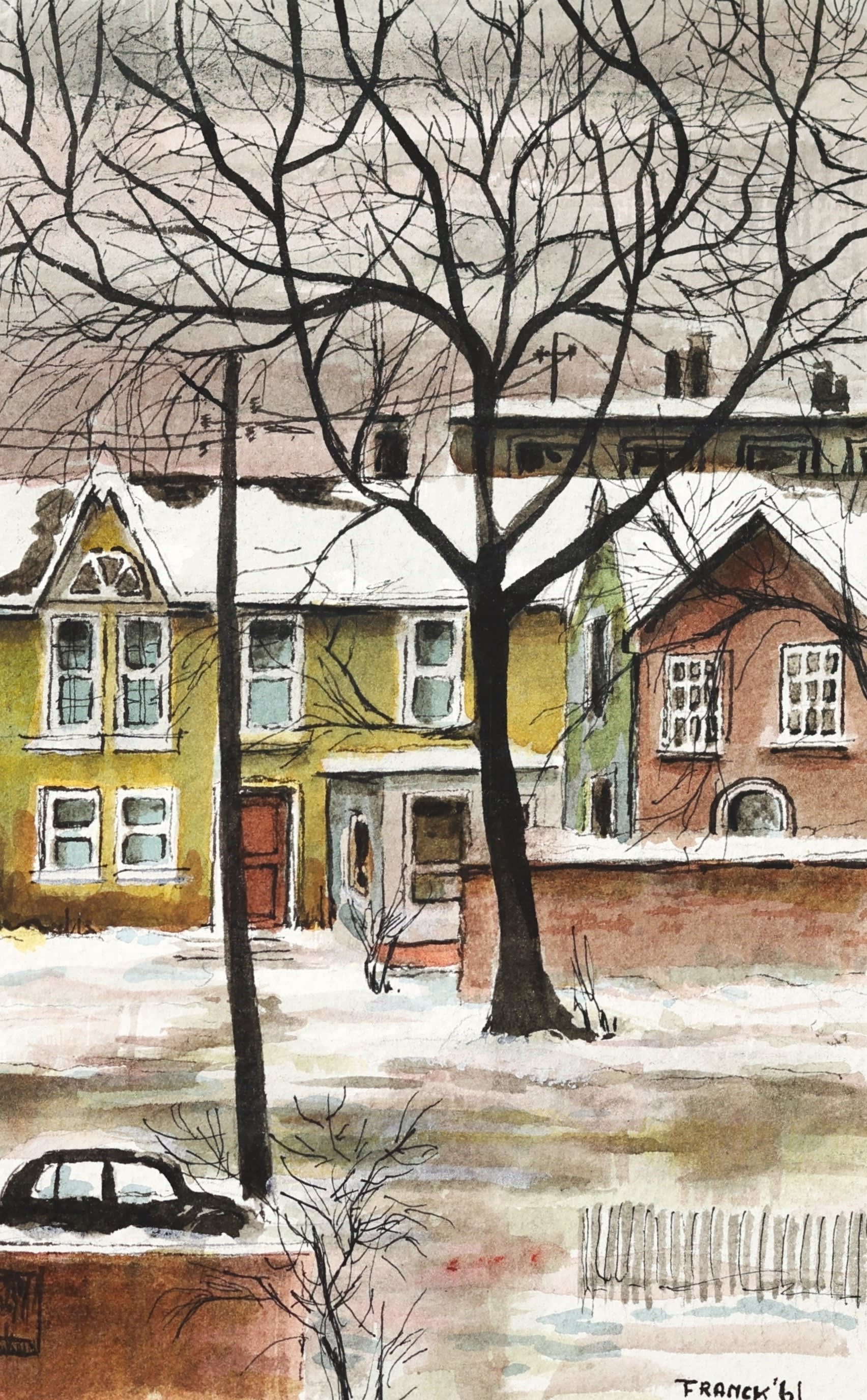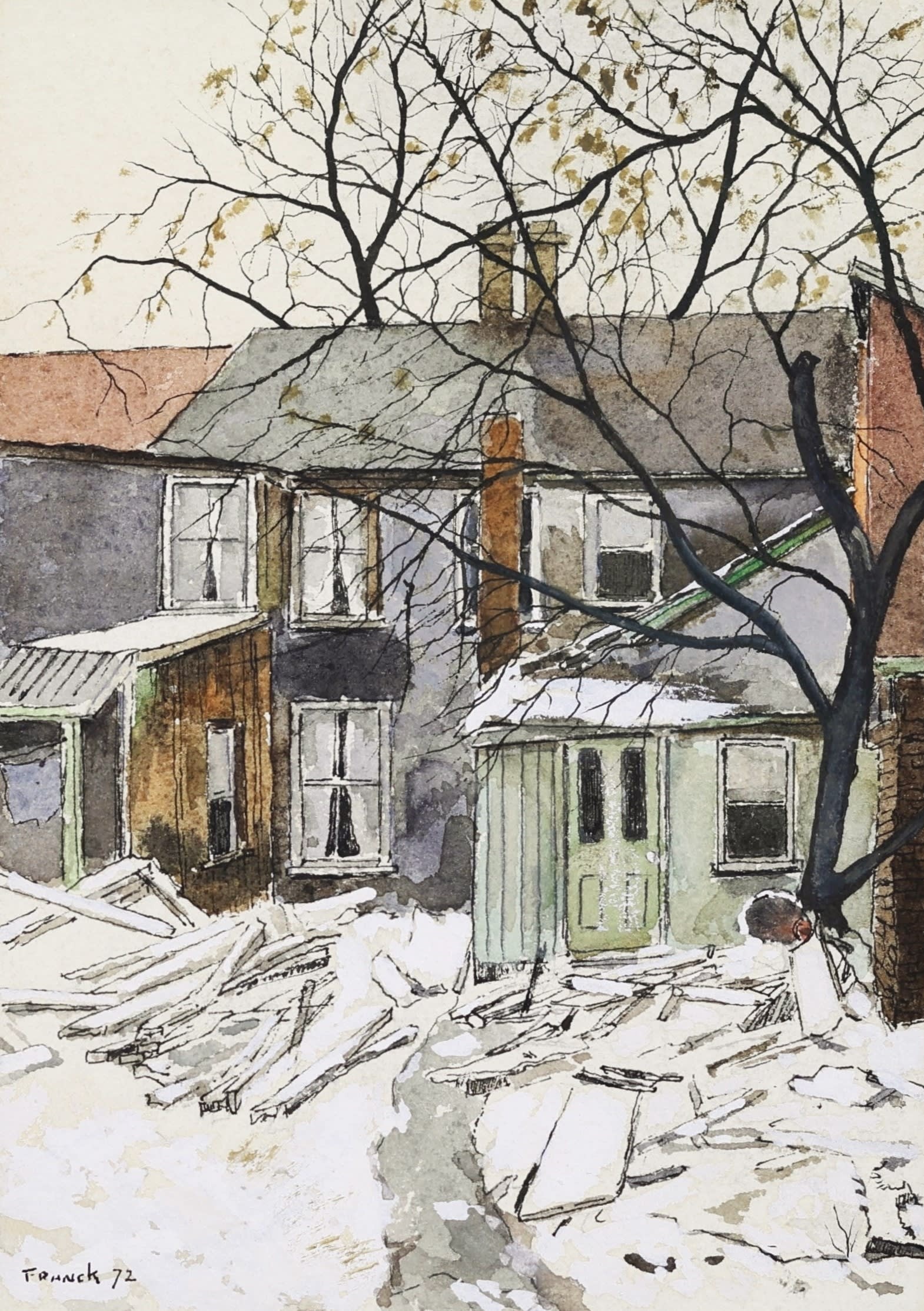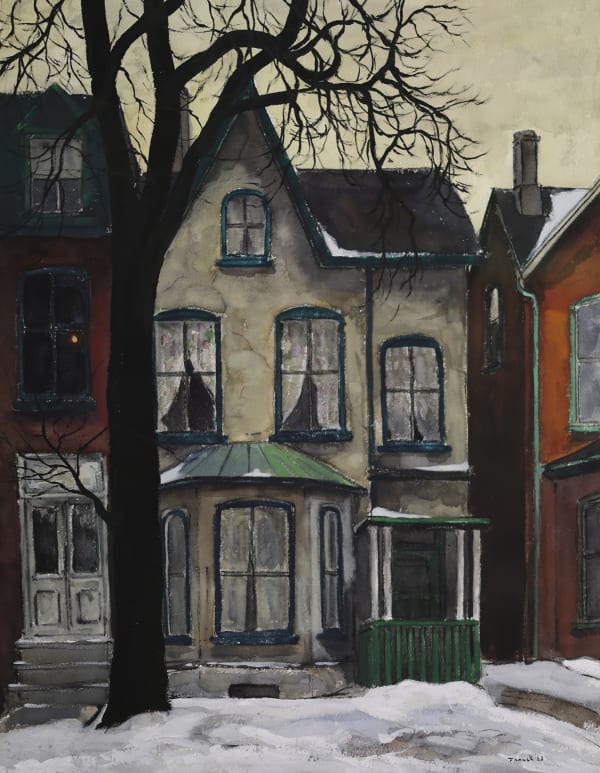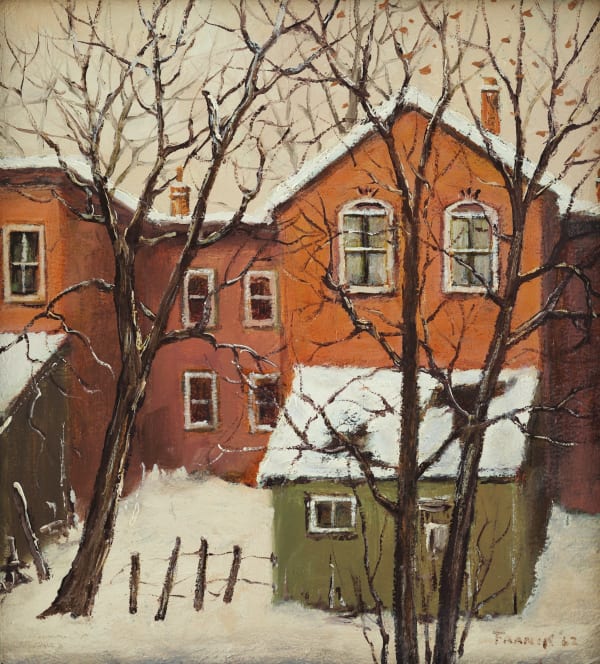"Franck's love of old Toronto was always with him. He had a third eye and its vision was focused on red brick and the arthritic trees standing cold in the snow. Albert's personality matched his subjects; he was friendly, unpretentious and comfortable."
Harold Town
Albert Jacques Franck (April 2, 1899-February 28,1973) was a Canadian painter who specialized in capturing the beauty of Toronto houses. Born in Middelburg, Holland, Franck's early years were marked by a wide range of experiences. He was the long-distance swimming champion of Belgium in 1924 and traveled extensively, even working on a tea plantation in Java.

Albert Franck; Lane, East Toronto
During his formative years, Franck exhibited a natural affinity for the arts, initially expressing himself through music before discovering his true calling in painting. Despite familial expectations and various occupations, Franck's passion for art remained steadfast, eventually leading him to Canada in 1926.

Albert Franck; Chestnut Street
Upon arriving in Canada, Franck immersed himself in the vibrant cultural landscape of Toronto. Despite lacking formal training, his distinctive artistic vision began to garner attention in the 1940s, with solo exhibitions at high profile venues such as Simpson's and Eaton's.
Renowned for his meticulous attention to detail and unique perspective on urban life, Franck's paintings captured the essence of Toronto's historical architecture and changing neighbourhoods. His depictions of winter scenes and urban renewal reflected a deep empathy for the city and its inhabitants, earning him acclaim within the Canadian art community.

Albert Franck; Major Street
At the heart of Franck's artistic circle was his partnership with Florence Vale, a surrealist painter known for her avant-garde contributions to Toronto's artistic community. Together, they nurtured a vibrant studio environment that welcomed artists from diverse backgrounds, leaving an indelible mark on the Canadian art scene.
Franck's influence extended far beyond the walls of galleries, shaping the careers of aspiring talents such as Joyce Wieland and Kazuo Nakamura. His mentorship and support laid the foundation for the renowned Painters Eleven movement, further solidifying his legacy as a pivotal figure in Canadian art history.

Albert Franck; Behind Grange Ave.
Despite facing personal and professional challenges, including the economic turmoil of the 1929 market crash, Franck remained dedicated to his craft, immortalizing the changing cityscape with integrity and affection. His posthumous exhibitions continue to draw significant attention, ensuring that his legacy endures in galleries and collections worldwide.
In Albert Jacques Franck's delicate brushwork and nuanced depictions of Toronto's streetscapes, viewers find a timeless invitation to contemplate the subtle beauty and resilience of the urban landscape—a testament to the enduring power of art to capture the essence of a time and place.
Anthony R. Westbridge, The Collector's Dictionary of Canadian Artists at Auction- Volume One: A-F ( Vancouver, B.C.: Westbridge Publications Ltd., 1999).
Art Gallery of Ontario, A Tribute to Albert Franck (Toronto, ON: AGO, 1973).

Gallery Moos Ltd., Albert Jacques Franck (Toronto, ON: Gallery Moos, Ltd., n.d).
Harold Town, Albert Franck: His Life, Times & Work (Toronto, ON: McClelland and Stewart Limited, 1974).








